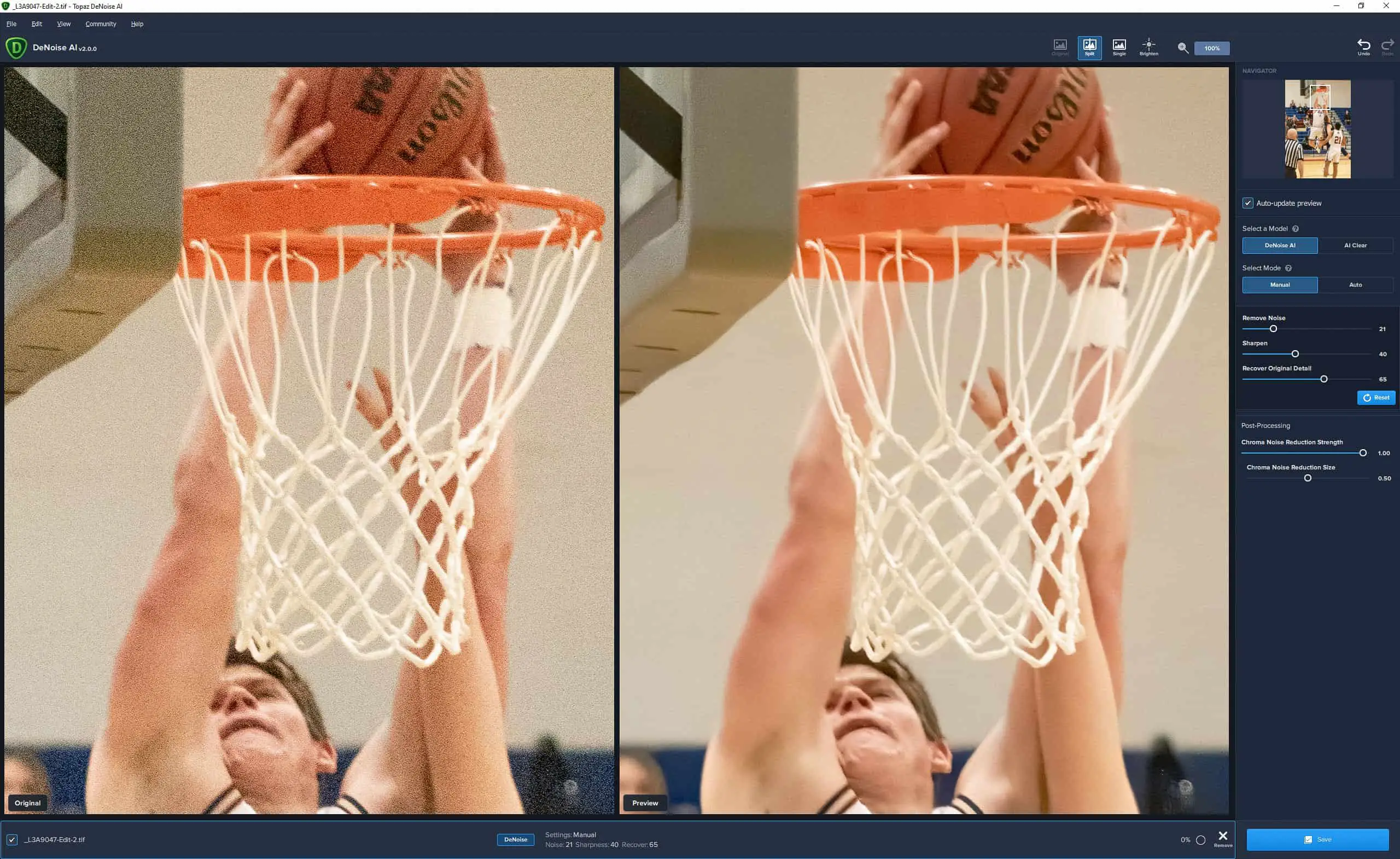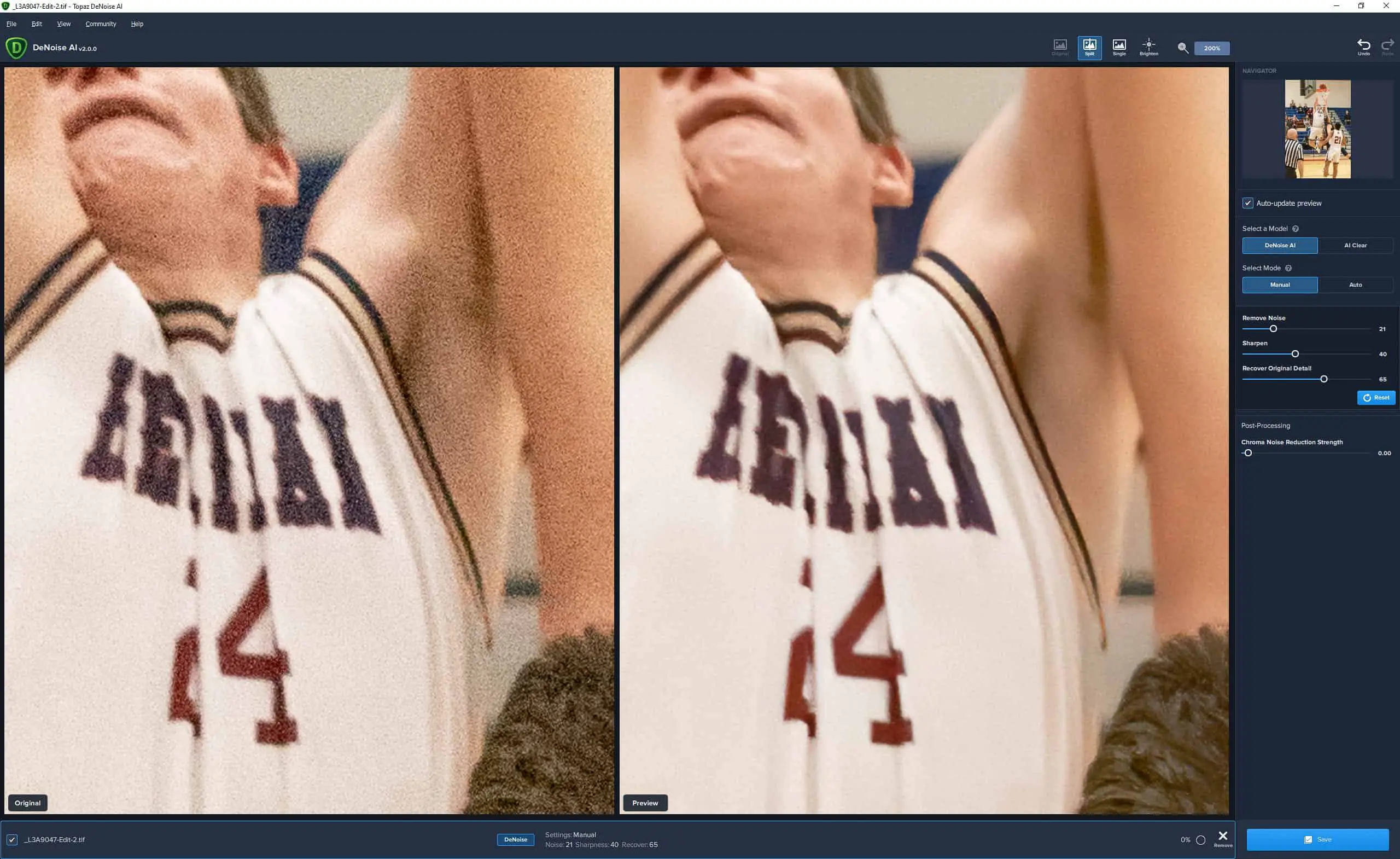

This means you can use it alongside Lightroom by exporting your images for noise reduction in Topaz DeNoise AI and then importing them back into Lightroom for further editing. Topaz DeNoise AI, although not integrated directly with Lightroom, can be used as a standalone application or as a plugin for popular editing software.

Its noise reduction capabilities are just one part of its comprehensive editing toolkit. Lightroom allows you to organize, edit, and manage your images within a cohesive workflow.
#Topaz denoise vs lightroom software
Integration and WorkflowĪdobe Lightroom's seamless integration with the Adobe Creative Cloud ecosystem makes it a popular choice for photographers who use other Adobe software like Photoshop and Bridge. This may be sufficient for basic noise reduction needs but may lack the precision required for more demanding noise reduction scenarios. It has a more simplified approach to noise reduction with limited options for fine-tuning the settings.

Lightroom, while offering noise reduction adjustments, may not provide the same level of customization as Topaz DeNoise AI. This level of customization ensures that you can achieve optimal results tailored to each individual image. You can adjust parameters such as noise reduction strength, detail recovery, and masking options, giving you greater control over the noise reduction process. Topaz DeNoise AI provides a range of customizable adjustments, allowing you to fine-tune the noise reduction settings according to your specific preferences. However, it may struggle to deliver the same level of precision and detail preservation as Topaz DeNoise AI, particularly in challenging noise situations or high-ISO images. On the other hand, Lightroom offers basic noise reduction tools that can be effective for general noise reduction purposes. This targeted approach ensures effective noise reduction without sacrificing image quality or sharpness. It intelligently analyzes your images, identifies noise patterns, and selectively reduces noise while preserving important details. However, Topaz DeNoise AI takes the lead with its advanced AI-driven technology. When it comes to noise reduction performance and image quality, both Topaz DeNoise AI and Lightroom have their strengths. Lightroom is known for its user-friendly interface, seamless integration with the Adobe Creative Cloud ecosystem, and extensive editing options beyond noise reduction. Lightroom's noise reduction capabilities allow you to reduce noise and graininess in your images, providing a cleaner and more polished look. Introducing Adobe LightroomĪdobe Lightroom is a comprehensive photo editing software that offers a wide range of editing tools, including noise reduction features. With its smart noise reduction technology, customizable adjustments, and batch processing capabilities, Topaz DeNoise AI promises to deliver exceptional results and enhance the overall quality of your photographs. It utilizes advanced artificial intelligence algorithms to analyze and selectively remove noise while preserving important details. Topaz DeNoise AI is a powerful software dedicated to reducing noise in your images.

Read on to discover the key differences and find the perfect fit for your editing workflow. In this blog post, we will compare Topaz DeNoise AI and Lightroom to help you decide which one is the better noise reduction tool for your photography needs. Both software tools offer noise reduction capabilities, but they differ in terms of features, performance, and workflow integration. When it comes to reducing noise in your photographs, two popular options stand out: Topaz DeNoise AI and Adobe Lightroom. Lightroom: Which is the Better Noise Reduction Tool?


 0 kommentar(er)
0 kommentar(er)
